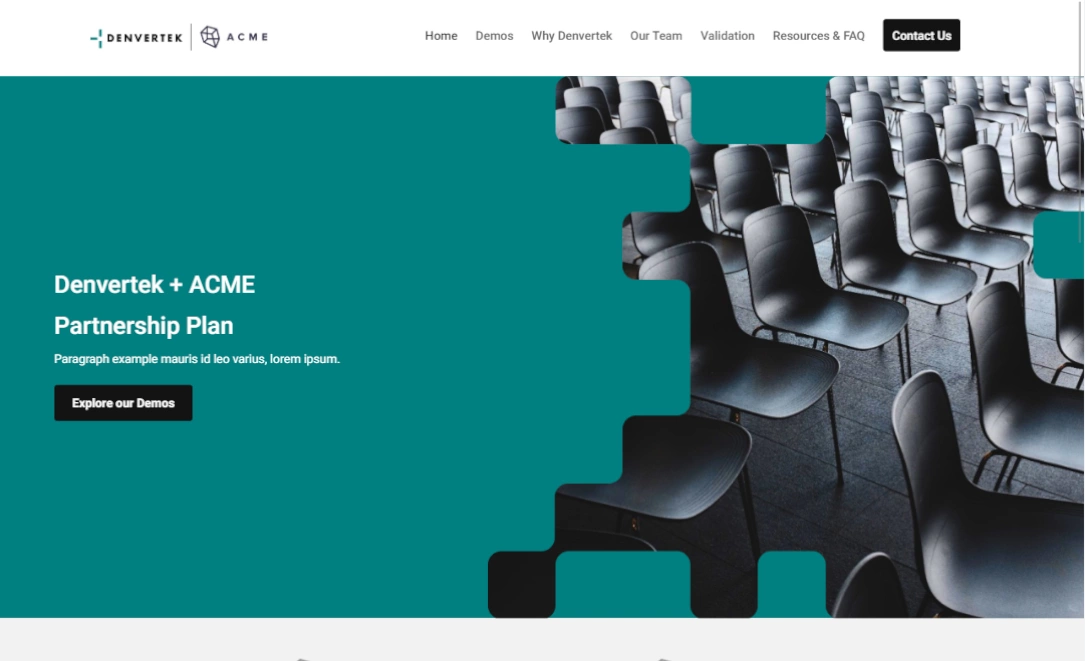In today’s market, you’ve probably heard that sales enablement is a popular strategy to help your business. It can help align your sales and marketing teams and lead to overall improved sales-readiness.
When creating your sales enablement strategy, it’s important to craft the right type of high-value content that supports it. But what kind of sales enablement content? A tutorial blog? A well-produced training video? An informational graphic detailing your buyer persona? With so many different sales enablement content types available, it can be difficult to determine what kind is right for you.
In this article, we’ll take you through how to craft effective and engaging content for your target audience, identify why it’s important to your sales enablement strategy, and tell you how to deliver it with Zoomforth’s methods.
What is sales enablement content?
To understand the role content plays in sales enablement strategy, you must first understand sales enablement. Sales enablement essentially refers to the process of training your sales reps.
Sales enablement is a catch-all strategy that involves multiple elements that can help a sales team improve their performance including training, coaching, courses, and even special events.
Sales enablement content refers to any type of informational material that supports your sales team and speaks to your target audience. Commonly, there are two types of sales enablement content: internal content and external content. Internal content is any training information or sales enablement materials used by your sales reps to improve their performance, including market research reports, buyer persona documents, sales scripts, email templates, and more. External content is more customer-facing and can refer to a blog, case studies, eBooks, product reviews and comparisons, infographics, or how-to guides.
Why is having a sales enablement content strategy important?
The purpose of a sales enablement content strategy is to:
- Educate your sales team
- Attract your target audience, and
- Contribute to the success of both your sales team and your product.
The right kind of content enhances your marketing strategy, improves your sales team’s productivity, and contributes to the overall satisfaction of your team. It can also aid your customers in their buying decisions, encourage them to take quicker action, and help them understand your product better.
There are several stages to crafting great sales enablement content strategy — let’s lay them out.
Stage 1: Identify the target audience for your sales enablement content
Identify buyer personas to pinpoint sales enablement topics to cover
Before you can come up with sales enablement content ideas, the first task is to determine who you are making it for.
Identifying the buyer persona or ideal customer profile you are hoping to target is key. A buyer persona considers a customer’s motivations, what kinds of decisions they make, and — most importantly — why they make those decisions. Any content you create should align with your identified persona.
For example, let’s say your typical buyer persona is Angela, a 32-year-old personal trainer. What types of content would appeal to her and why? Would she prefer to read a blog, watch a tutorial video, or consume a newsletter about your product? What types of sales enablement content would your sales team need to support how they pitch your product to Angela? You can apply this same concept to prospective B2B clients, creating similar profiles to accurately target who you want to reach, in ways they want to hear from you.
Research and analyze the wants and needs of each persona
To answer questions about your buyer personas, it’s important to conduct research on their wants and needs. This kind of research can include:
- Sending interviews and surveys to your existing customers or clients
- Gathering feedback and reviews
- Using that information to create an outline of your buyer persona
Good research and analysis will help inform the sales enablement content types you’ll need to create for your customers on their buying journey.
Map out the customer journey
Now that you’ve identified the buyer persona of your potential customer, you’ll want to create a customer journey map. A journey map lays out all the interactions that your customer may have with your product from start to finish — from how they first heard of you through social media or brand advertising, to their direct interactions with your product, website, or sales team. It includes all of the actions your customer takes with your product over a period of time.
Stage 2: Craft your custom content for sales enablement
Produce and optimize different sales enablement content types
So, you’ve outlined your customer and the journey they’ll take with your product. Your next step is to create engaging sales enablement content materials that help your representatives when they speak to them.
Optimizing and producing this content involves a lot of pre-planning. It’s essential that the writing, designing, editing, and formatting of your content make it engaging, relevant, and valuable to your customer. Whatever type of content you decide to make – a blog, infographic, or microsite – should be formatted for search engines, social media, and mobile devices. This will increase its visibility, reach, and accessibility.
Following best practices for SEO, such as using keywords, titles, headings, meta tags, images, and links is also key. You should also follow best practices for social media, such as using hashtags, captions, tags, and calls to action. Best practices should also be applied to content for mobile devices, such as using responsive design, short paragraphs, and clear fonts. It might sound like a lot of factors to consider, but once you’ve established what works best for your clients, creating customizable content templates can help to save time in these areas.
Select your content delivery methods and build a content calendar
Now that you know what kind of content you want to create, you’ll need to plan when you will create it, and how you will distribute it. Your content plan and calendar should be based on your buyer journey and sales cycle. Once you have a plan in place, you need to determine the best way of delivering your content. Microsites are one great example of a content delivery method that works. A microsite is a branded content site outside of your main website. It’s a platform that hosts content that is valuable to your target audience, showcasing everything from digital marketing campaigns to onboarding tools for new employees.
Deliver, review, and improve your sales enablement content materials
Once you’ve delivered your content, the next step is to assess how well it performed with your target audience. Would the training video have worked better as a blog post? How many people viewed your microsite? Could that number be increased? Studying the analytics of content performance is an important element here, as well as meeting with your sales enablement team to review what worked and what didn’t.
Deliver custom sales enablement content with Zoomforth
Zoomforth can help you deliver the kind of winning content that will support your sales enablement content strategy needs. We’re at the forefront of microsite creation, a proven way to showcase the best content for your brand.
Microsites can distribute your proposals, enhance and centralize ongoing project delivery, and educate your sales team on anything they need. Additionally, studies have shown that using microsites increases both your audience engagement and sales conversions. Reach out today to request a demo!



